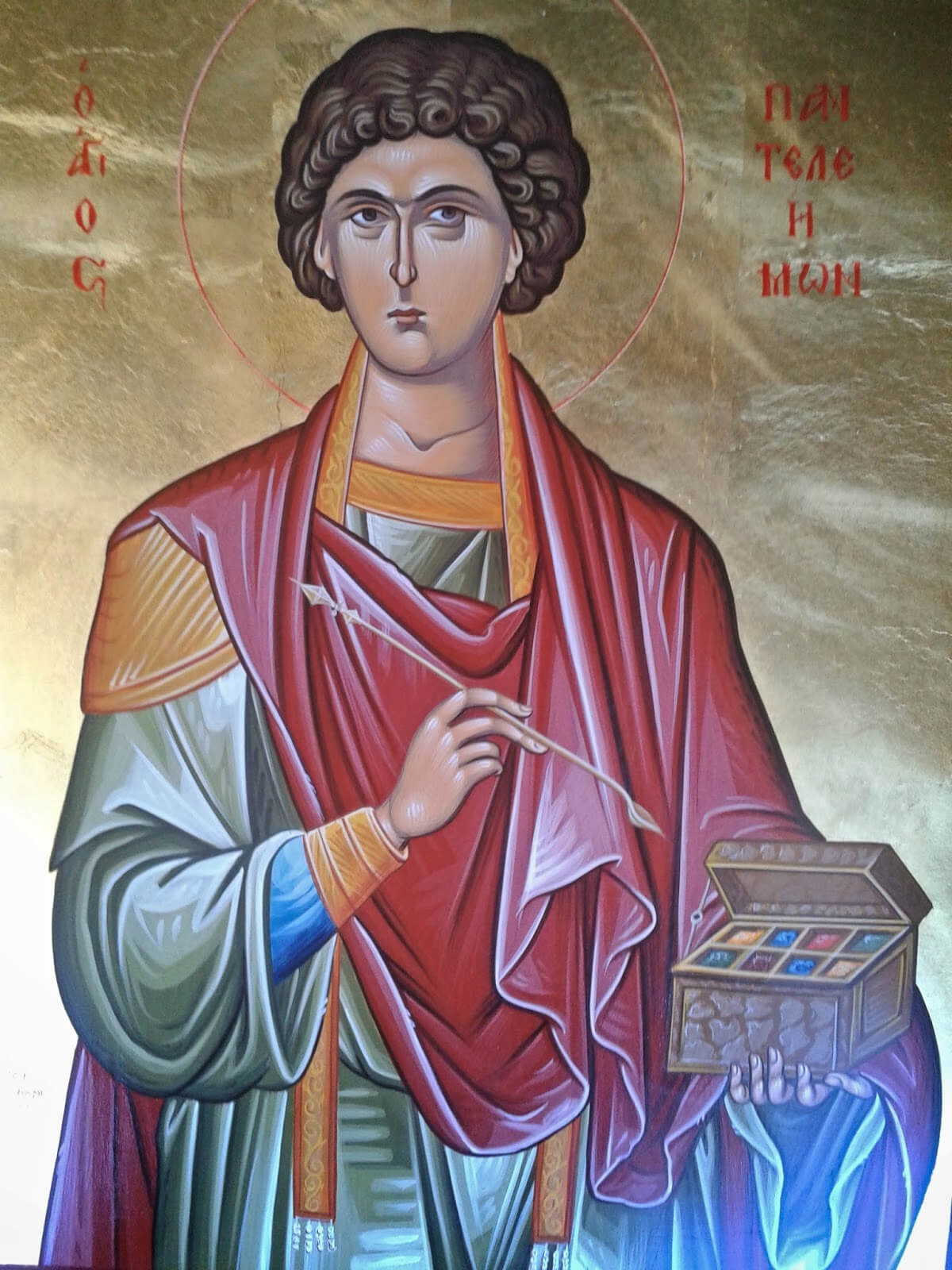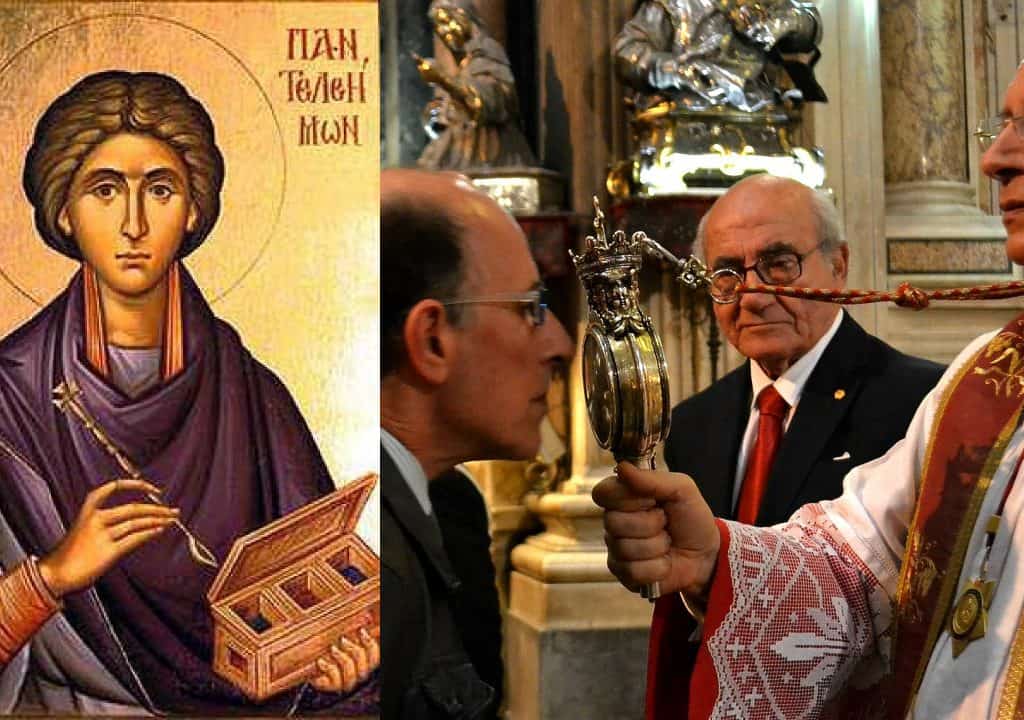Medical martyr of 29 years of age / 275-+305 / Feast: July 27. Pantaleon means in Greek “he who has compassion on all”. Physician born in Nicomedia (present-day Turkey). He was beheaded for professing his Catholic faith during the persecution of the Roman Emperor Diocletian on July 27, 305.
St. Pantaleon — Patron saint of the sick, history and miracles
What is known of St. Pantaleon comes from an ancient 6th-century manuscript in the British Museum.
Pantaleon was the son of a pagan named Eubula and a Christian mother. Pantaleon was a medic. His teacher was Euphrosinus, the most notable doctor in the empire. He was a medic to Emperor Galerius Maximianus in Nicomedia.
He knew the faith but was carried away by the pagan world in which he lived and succumbed to the temptations that weaken the will and end the virtues, falling into apostasy.
The Healing from Above
A good Christian named Hermolaos opened his eyes, exhorted him to know “healing from above” and brought him into the bosom of the Church. From then on he gave his science to the service of Christ, serving his patients in the name of the Lord.
In 303, the persecution of Diocletian began in Nicomedia. Pantaleon gave away everything he had to the poor. Some doctors, out of envy, betrayed him to the authorities. He was arrested along with Hermolaos and two other Christians.
The emperor who wanted to save him secretly
He told him to apostatize, but Pantaleon refused and immediately miraculously healed a paralytic to demonstrate the truth of the faith. The four were condemned to be beheaded.

The records of his martyrdom tell us about miraculous events:
Six different ways they tried to kill him
With fire, with molten lead, by drowning him, by throwing him to the wild beasts, by torturing him on the wheel and by running him through with a sword. With the Lord’s help, Pantaleon escaped unharmed. He then freely allowed himself to be beheaded and milk instead of blood flowed from his veins and the olive tree where the event took place blossomed instantly.
Maybe these stories are a symbolic way of exalting the virtue of the martyrs, but in any case, the important thing is that Pantaleon shed his blood for Christ and the Christians took him as an example of sanctity.
In the East, he is held in great veneration as a martyr and as a doctor who treated the poor for free. He was also very famous in the West since ancient times. Some relics of his blood are preserved in Madrid (Spain), Constantinople (Turkey) and Ravello (Italy).
The miracle of the blood of St. Pantaleon
A portion of his blood is reserved in a vial on the main altar of the Royal Monastery of the Incarnation in Madrid of the Austrias, next to East Square, Madrid, Spain.
It was taken from a larger one kept in the Italian Cathedral of Ravello. It was donated to the monastery along with a piece of bone of the saint by the viceroy of Naples. In Madrid, it is kept by the Augustinian Recollect nuns dedicated to prayer.
There is evidence that the relic was already in the Encarnación since its foundation in 1616.
The blood, in a solid state throughout the year, liquefies (the phenomenon of liquefaction occurs), like the blood of St. Jenaro, without human intervention. This happens on the eve of the anniversary of his martyrdom, that is, every July 26th.
This has happened every year up to the date of this writing when 1700 years of his martyrdom are celebrated. In that year the miracle took place while the nuns were praying in the choir of the temple and the presence of hundreds of visitors.
The monastery opens its doors to the public for all to witness
On some occasions, blood has been slow to solidify to signal a crisis, as happened during the two world wars.
Many attempts have been made to explain the phenomenon by purely natural mechanisms, such as temperature or the phases of the moon. However, none of the explanations have been satisfactory to science.
The church has not defined itself as a miracle. The sisters say simply that it is “a gift from God”.
To facilitate public viewing and prevent deterioration of the relic, in 1995 the nuns installed television monitors that magnify the image of the capsule containing the saint’s blood tenfold.
The blood of a martyred doctor liquefies. What is God telling us with this wonder?
Do we not need this courageous witness of one who gave his life for the faith? His blood reminds us of our responsibility to live the faith in a time when so many fall into apostasy or simply indifference.
How much we need the example of St. Pantaleon, who knew how to live his profession in the service of Jesus Christ.
This article was translated and adapted by Infomistio.com / Source: corazones.org

